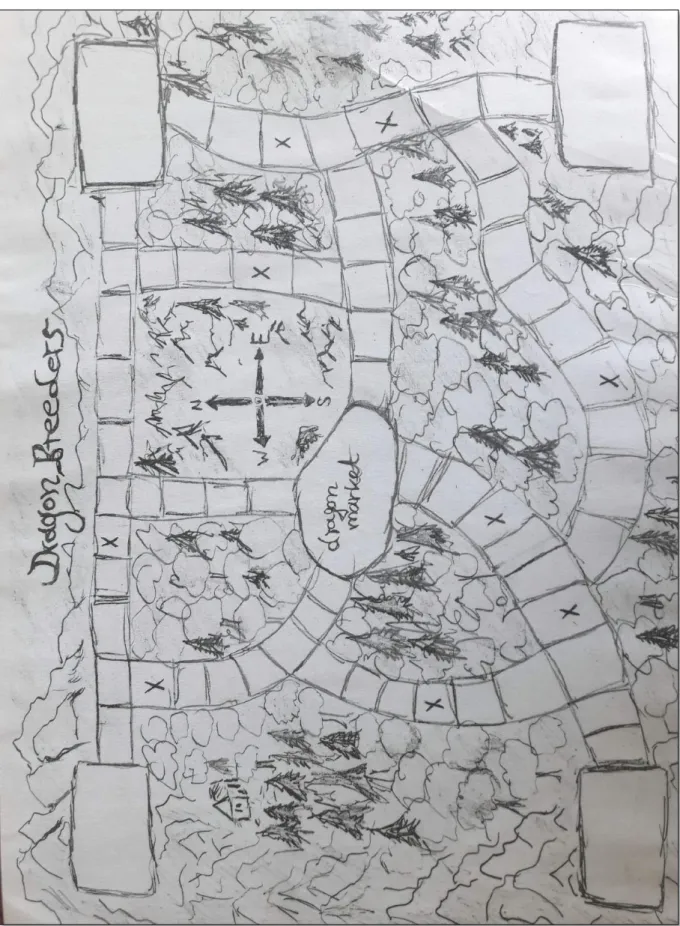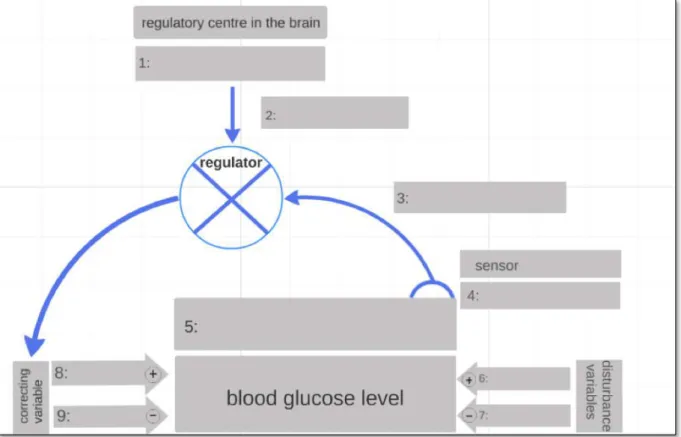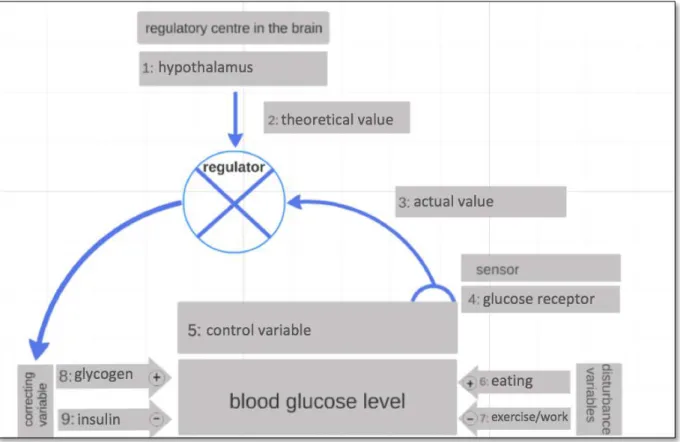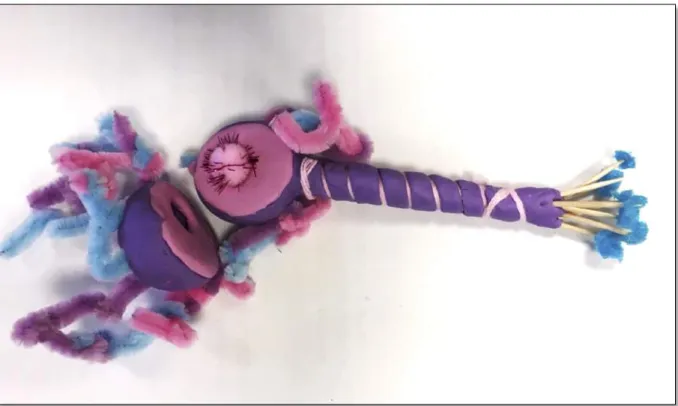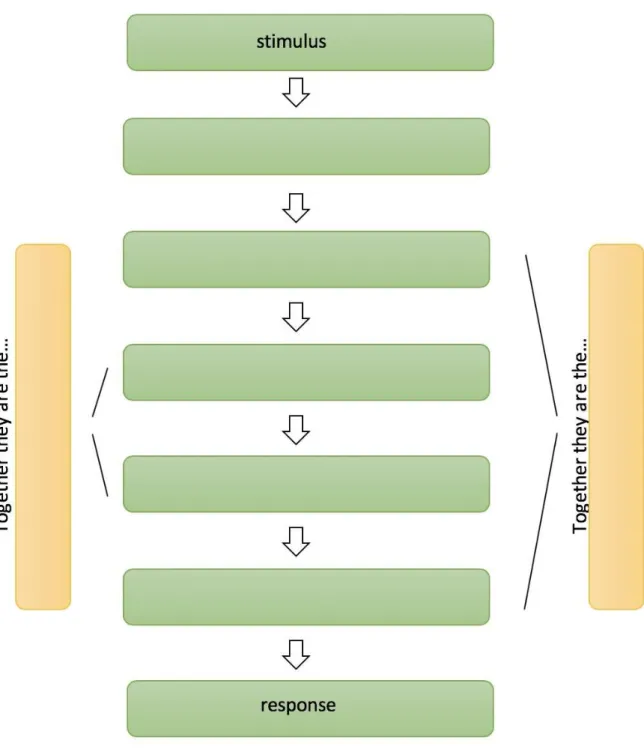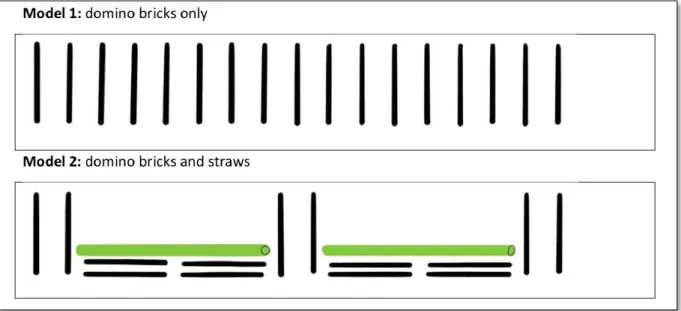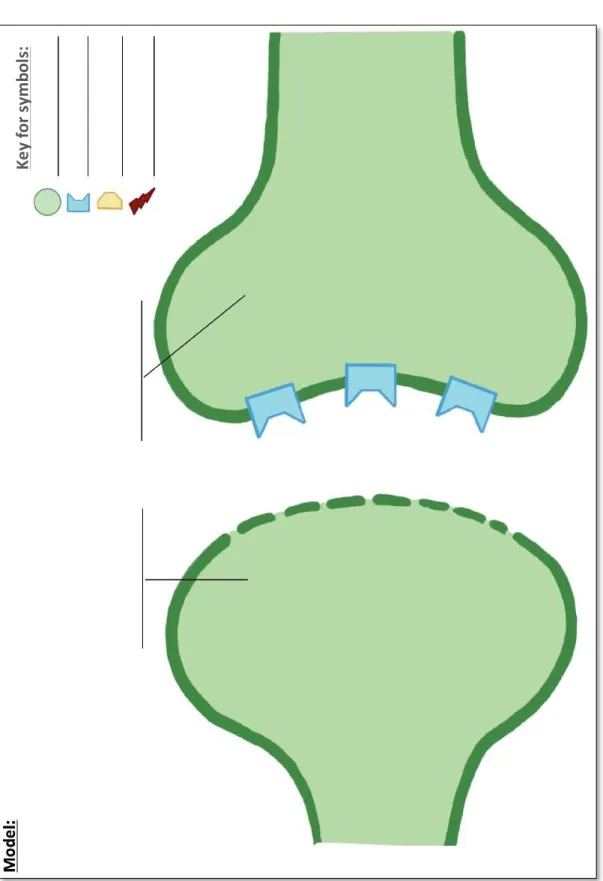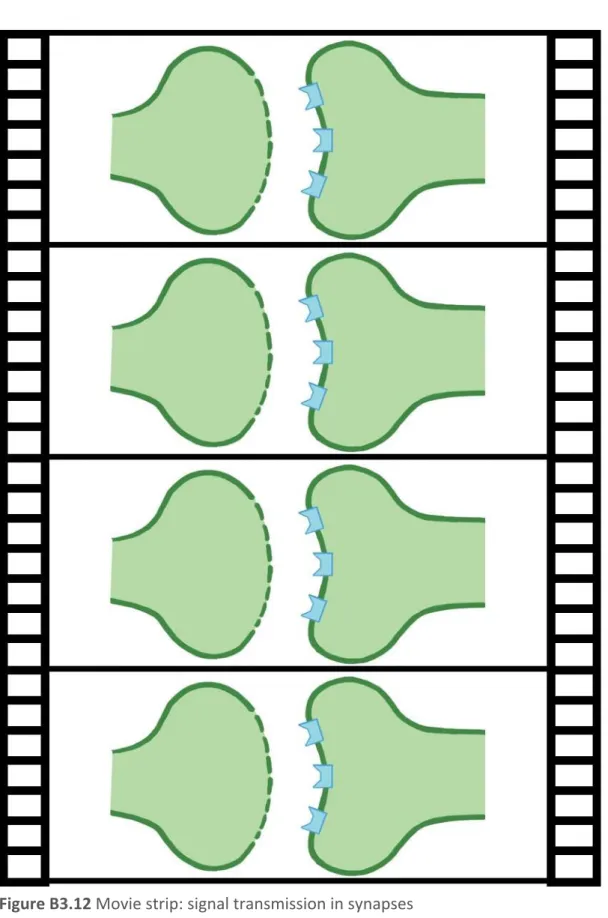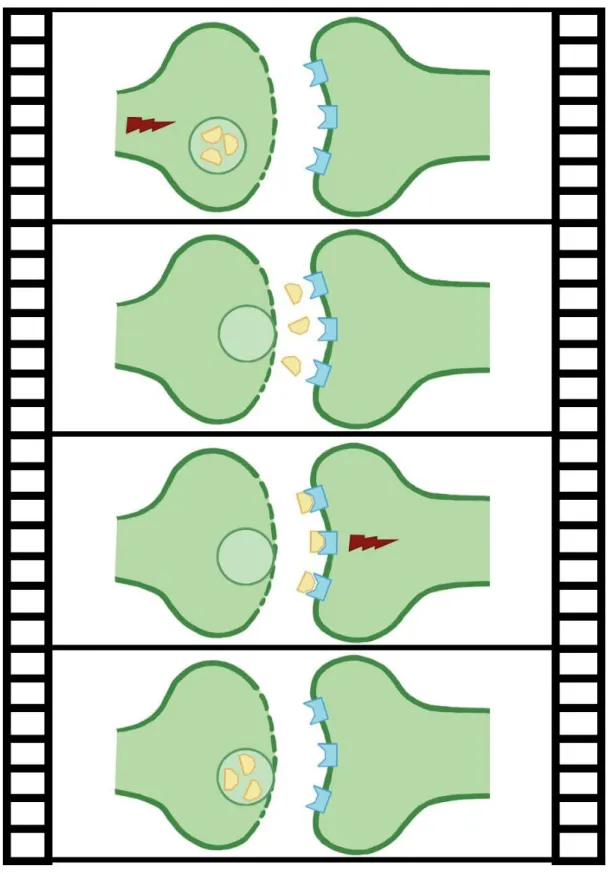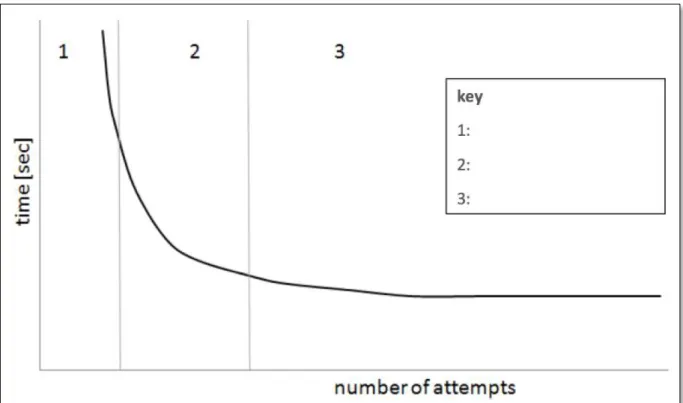Chemistry
■
M IN T- EC -T he m en cl us te r B ili ng ua lit ät & In te rn ati on al itä t
UNTERRICHT GESTALTENMI N T go es C LI L N at ur w is se ns ch aft en m od ul ar b ili ng ua l
Maths
Excellence-Schulnetzwerk MINT-EC!
MINT-EC ist das nationale Excellence-Netzwerk von Schulen mit Sekundarstufe II und ausgeprägtem Profil in Mathematik, Informatik, Naturwissenschaften und Technik (MINT). Es wurde im Jahr 2000 von den Arbeitgebern gegründet und arbeitet eng mit deren regionalen Bildungsinitiativen zusammen. MINT-EC bietet ein breites Veranstal- tungs- und Förderangebot für Schülerinnen und Schüler sowie Fortbildungen und fach- lichen Austausch für Lehrkräfte und Schulleitungen. Das MINT-EC-Netzwerk steht seit 2009 unter der Schirmherrschaft der Kultusministerkonferenz der Länder (KMK).
Der Zugang zum MINT-EC-Netzwerk ist über ein bundesweit einmaliges Auswahl- verfahren möglich, das Qualität und Quantität der MINT-Angebote der Schulen prüft und dabei höchste Standards ansetzt.
Die Ziele von MINT-EC sind
— Vernetzung exzellenter MINT-Schulen untereinander sowie mit Wirtschaft und Wissenschaft
— Aktive Förderung des MINT-Nachwuchses, Studien- und Berufsorientierung
— Förderung der qualitativen Schulentwicklung und die Anbindung des Fachunterrichts an den aktuellen Stand der Forschung
— Verdeutlichung der gesellschaftlichen Relevanz von MINT
In Kooperation mit Partnern aus Schule, Wirtschaft und Wissenschaft entwickeln wir innovative und bedarfsgerechte Maßnahmen und Angebote für unsere MINT-EC- Schulen.
Zur MINT-EC-Schriftenreihe:
Beiträge und Resultate aus den vielfältigen Aktivitäten des nationalen Excellence-Netz- werks MINT-EC und der Netzwerkschulen werden in dieser Schriftenreihe
zusammengeführt und veröffentlicht.
In verschiedenen Themenclustern erarbeiten MINT-EC-Lehrkräfte und -Schulleitungen Schul- und Unterrichtskonzepte, entwickeln diese weiter und nehmen dabei Impulse aus Wissenschaft und Forschung sowie aus aktuellen Herausforderungen der schulischen Praxis auf.
Die MINT-EC-Schriftenreihe nimmt drei wesentliche Aktionsfelder in den Blick, denen die einzelnen Publikationen zugeordnet werden:
— Schule entwickeln
— Unterricht gestalten
— Talente fördern
MINT goes CLIL
Naturwissenschaften modular bilingual
Vorwort
Naturwissenschaftlicher Unterricht in Schulen kann nicht nur in der Schul-, sondern auch in einer Fremdsprache durchgeführt werden. Die in diesem Zusammenhang gebräuchlichen Begriffe Content and Language Integrated Learning (CLIL) und bilingualer Unterricht werden häufig synonym verwendet. Während die international gebräuchliche Bezeichnung CLIL die doppelte Fokussierung des inhaltlichen und sprachlichen Lernens sowie Lehrens betont (z.B.
Colyle et al. 2010), hebt die im deutschen Sprachraum übliche Benennung bilingualer Unterricht den Einsatz von zwei Sprachen hervor. Mit dem Ziel der Erreichung einer
doppelten Fachsprachlichkeit wird im bilingualen Fachunterricht der funktionale Gebrauch der Fremd- und Schulsprache mit dem Schwerpunkt inhaltlichen Fachlernens verwirklicht (z.B. Eurydice 2006, z.B. MSW NRW 2012). Bilingualer Unterricht entwickelt somit das seitens der Europäischen Kommission (2004) geforderte Ziel sprachlicher Förderung der Muttersprache und der Fremdsprachen auf berufs- und studienvorbereitendem Niveau.
Bilingualer Unterricht kann in verschiedenen Formen realisiert werden: Abgesehen von der bekannten schulischen Form eines bilingualen Zweiges kann bilingualer Unterricht auch in Modulen erfolgen und eine begrenzte Anzahl von Unterrichtsstunden umfassen. So können sowohl Schülerinnen und Schüler als auch Lehrerinnen und Lehrer in diesem Bereich
Erfahrungen sammeln, um ihn gegebenenfalls an Ihrer Schule zu stärken. Eine praxisnahe Weiterführung des bilingualen Unterrichts können internationale Kontakte und Projekte darstellen.
Während der bilinguale Unterricht mit geisteswissenschaftlichen Sachfächern in hohem Maße interkulturelles Lernen ermöglicht, liegt bei naturwissenschaftlichen Fächern der Schwerpunkt vor allem auf der globalen Kommunikation über naturwissenschaftliche
Erkenntnisse. Ziel ist es daher, die Schülerinnen und Schüler auf ihre Ausbildung, ihr Studium oder ihren Beruf mit naturwissenschaftlichem Schwerpunkt vorzubereiten, indem sie
Englisch als Lingua Franca verwenden.
Auch wenn die Herausforderung groß erscheint, muss bedacht werden, dass aufgrund des lateinischen oder griechischen Ursprungs der meisten Fachbegriffe eine Zusatzbelastung in diesem Bereich gering ist. Fachbegriffe müssen die Lernenden schließlich auch im deutschen Fachunterricht lernen und anwenden (z.B. deu. Atom/engl. atom; deu. Molekül/engl.
molecule; deu. Neuron/engl. neuron).
Die Komplexität und Abstraktheit der Naturwissenschaften stellt jedoch eine besondere Herausforderung dar, welcher im bilingualen Unterricht gezielt durch fachsprachliches Scaffolding sowie den Einsatz von Experimenten und Modellen begegnet werden sollte.
Betont sei, dass im bilingualen Unterricht gezielt und funktional begründet die deutsche Sprache verwendet wird, um einerseits das Gelernte zu festigen und andererseits die Ausbildung der doppelten Fachsprachlichkeit zu fördern.
In diesem Sinne ist Fremdsprachenlernen nicht alleinig dem Schulfach Englisch zugeordnet, sondern dient der Entfaltung von Lebenskompetenzen: "Learning a foreign language is not a school subject - it is a life skill!".
Die Autorinnen und Autoren des Clusters „Internationalität und Bilingualität in Schulen“
Einleitung
Im Jahre 2012 in Berlin gegründet, trifft sich das bundesweite MINT-EC-Cluster "Bilingualität und Internationalität in Schulen" zweimal im Jahr in den Partnerschulen in ganz Deutschland, um bilingualen Unterricht und dessen Unterstützung durch internationale Projekte in MINT- Fächern weiter zu entwickeln. Die Clustertreffen dienen der Fortbildung der
Teilnehmerinnen und Teilnehmer in Bezug auf zuvor gewählte Schwerpunkte, sowohl durch Erfahrungsaustausch als auch durch externe Referenten. Die Lehrkräfte, die alle mindestens ein MINT-Fach bilingual unterrichten, entwickelten gemeinsam Unterrichtsvorhaben,
erprobten diese im eigenen Unterricht und optimierten sie. Daraufhin haben einige MINT-EC Schulen internationale Projekte ins Leben gerufen, die den Schülerinnen und Schülern das Anwenden ihrer Kompetenzen in der doppelten Fachsprachlichkeit ermöglichten.
Außerdem ist aus der Clusterarbeit diese Broschüre entstanden, die mit Modulen von wenigen Unterrichtsstunden den Weg in den bilingualen MINT-Unterricht ebnen soll. Das Material ist daher so konzipiert, dass Sie als MINT-Lehrkraft ohne Vorbild und Vorerfahrung Bilingualität erproben können. Wir ermutigen Sie ausdrücklich, die bilingualen Module anzuwenden und deren Lernerfolg kognitiv wie affektiv-motivational zu begutachten.
In den Modulen dieser Schrift war es uns wichtig, dass die Schülerinnen und Schüler Erfahrung mit Realobjekten, Experimenten, beobachtbaren Vorgängen und Modellen machen und dabei durch den funktionalen Gebrauch der Fremdsprache in authentischen Sprechanlässen und Englisch als Kommunikationssprache einen neuen Zugang zum MINT- Fach finden und durch die andersartige Herangehensweise neu motiviert werden.
Wir wünschen bei der Erprobung viel Spaß und Erfolg!
Nachfolgend finden Sie zu Ihrem Überblick eine Kurzdarstellung der Module.
A. MATHEMATICS A1. Describing graphs
Im Mittelpunkt steht die Erarbeitung des Fachvokabulars zur Beschreibung von
Zuordnungen. Die erlernten und wiederkehrenden Sprachstrukturen sind für die Analyse jeglicher Funktionen (lineare und quadratische Funktionen, Potenzfunktionen, ganzrationale Funktionen) verwendbar und auch in den anderen naturwissenschaftlichen Fächern
einsetzbar.
B. BIOLOGY
B1. Dragon breeders – board game on classical genetics
In der Humangenetik werden Beispiele unterschiedlichster Erbkrankheiten herangezogen, um den Schülerinnen und Schülern diverse Vererbungsmodi zu vermitteln. Auch wenn Schülerinnen und Schüler die Vererbung von Krankheiten generell interessant finden, bereitet die große Fülle an Fachbegriffen ihnen oft Schwierigkeiten.
Bei diesem Brettspiel haben die Schülerinnen und Schüler die Möglichkeit, einmal auf eine andere Art und Weise sowohl Vererbungsmodi als auch das dazugehörige Fachvokabular zu wiederholen und zu vertiefen. Es basiert auf Fragekarten, die je nach Lerngruppe und Jahrgangsstufe entsprechend erweitert werden können.
B2. Learning about diabetes
Die Unterrichtseinheit Diabetes aktiviert zunächst das Vorwissen der Schülerinnen und Schüler zum Krankheitsbild Diabetes. Vokabeln werden zu den einzelnen Abschnitten spielerisch eingeführt. Im Verlauf der Unterrichtseinheit erarbeiten die Schülerinnen und Schüler den Regelkreis zur Blutzuckerregulation beim gesunden Menschen und erkennen die Problematik bei Diabetes-Patienten. Ferner lernen die Schülerinnen und Schüler, die beiden Krankheitsformen Typ I und Typ II Diabetes voneinander zu unterscheiden, und vertiefen ihre Kenntnisse.
Das individuelle und nach Bedarf mehrfache Anschauen von kurzen Youtube-Filmen zum Thema Diabetes am Computer/Laptop kommt dabei dem individuellen Erarbeitungs- und Lerntempo der Schülerinnen und Schüler entgegen.
B3. Neurons – structure and function
Der Aufbau von Nervenzellen und die Signalübertragung zwischen ihnen ist für Schülerinnen und Schüler der Sekundarstufe I äußerst abstrakt und folglich nur schwer nachzuvollziehen.
Daher sind besonders Modelle geeignet, diese komplexe Thematik zu erarbeiten und zu verstehen. In diesem Modul sollen die Schülerinnen und Schüler im Rahmen des
naturwissenschaftlichen Erkenntnisweges Modelle selbst entwickeln, um sowohl den Aufbau einer Nervenzelle als auch die Funktion der Schwann'schen Zelle und der Signalübertragung an der Synapse zu veranschaulichen. Die Schülerinnen und Schüler arbeiten kooperativ in Partner- oder Gruppenarbeit, welche durch zahlreiche gestaffelte Hilfekarten und
Vokabelboxen unterstützt wird. Auf diese Weise ist es den Schülerinnen und Schülern möglich, die Thematik handlungsorientiert zu erarbeiten und dabei in der Zielsprache zu kommunizieren.
B4. Cup stacking & voluntary motor learning
Prinzipien des motorischen Lernens lassen sich gut anhand des Lernversuches Cup stacking verdeutlichen. Im vorliegenden Modul, das für Lernende der fortgeschrittenen
Sekundarstufe konzipiert ist, dient das Versuchsprotokoll (Worksheet 5) als fachliches wie sprachliches Gerüst für die schrittweise Erarbeitung des Sachgegenstandes. Die in den Arbeitsmaterialien angelegten Darstellungswechsel und Verarbeitungsprozesse dienen der Wissenskonstruktion und Kommunikation über motorisches Lernen in der
Kommunikationssprache.
B5. Sport is good for you – blood circulation
Die Unterrichtsreihe soll Schülerinnen und Schülern der 6. oder 7. Jahrgangsstufen einen motivierenden und angstfreien Einblick in den bilingualen Biologieunterricht ermöglichen.
Sie kann auch als Auflockerung des Lehrbuchstoffes im Englischunterricht eingesetzt werden (z.B. im Rahmen des Oberthemas „Fitness, health and food“, welches sich in den meisten Lehrwerken in diesen Jahrgangsstufen findet) und somit den Englischlehrkräften einen Einblick in die Prinzipien und Möglichkeiten des bilingualen Sachfachunterrichts bieten.
Die Unterrichtseinheit folgt den Erkenntnisschritten der scientific method und bietet den Schülerinnen und Schülern die Möglichkeit, durch die einfache Durchführung von
Pulsmessungen und Atemfrequenz den Sachverhalt (sprachunabhängig) im wahrsten Sinne des Wortes zu begreifen.
B6. Diversity and order
Diese Unterrichtseinheit bietet die Möglichkeit, naturwisschenschaftliche, logische
Herangehensweisen mit authentischen Sprechanlässen in der Fremdsprache zu verbinden.
Durch das Herleiten eigener Kriterien ergibt sich für die Lernenden eine Notwendigkeit der Kommunikation. Hierbei können einfache, wiederkehrende Sprachstrukturen und
gleichzeitig der naturwissenschaftliche Weg der Erkenntnisgewinnung vertieft werden.
Durch unterschiedliche Schwierigkeitsgrade der Aufgaben ist auch eine Binnendifferenzierung in dieser Einheit denkbar.
B7. Biological magnification
Das Modul biological magnification kann in einer Unterrichtseinheit zur Ökologie in der Sekundarstufe II eingesetzt werden. Die Auseinandersetzung mit der historischen Situation in Minamata Bay in den späten 1950er und 1960er Jahren und deren Auswirkungen bis in die heutige Zeit bietet nicht nur eine Basis, um ökologische Schlüsselbegriffe
(Nahrungskette, Nahrungsnetz, Energiepyramiden, biotische und abiotische Faktoren etc.) zu erarbeiten, sondern auch einen Anreiz, um über unsere globale Verantwortung
nachzudenken: global denken – lokal handeln.
B8. Concept Map – DNA Replication
Die concept map stellt ein Arbeitsblatt zum Thema DNA-Replikation dar und kann in der Oberstufe im Rahmen des Genetikunterrichts eingesetzt werden. Die Lernenden können ihr Wissen bezüglich der DNA-Replikation überprüfen und reflektieren. Dadurch, dass in der concept map Bezüge zwischen den einzelnen Aspekten hergestellt werden, eignet sie sich im bilingualen Sachfachunterricht als sprachliches Gerüst, um den Sachverhalt stimmig zu verbalisieren.
C. CHEMISTRY C1. Magnesium
Die Unterrichtsstunde „Magnesium“ kann in der Unterrichtseinheit „Elementfamilien“ in der Sekundarstufe I eingesetzt werden. Die Schülerinnen und Schüler planen, ausgehend von einer Alltagssituation, Experimente zur Stoffbestimmung und erstellen ein „Wanted Poster“
für Magnesium. Hierbei vergleichen die Schülerinnen und Schüler die experimentell ermittelten Stoffeigenschaften mit denen von den schon bekannten Alkalimetallen.
Zusätzlich lernen sie die Bezeichnungen für einige Laborgegenstände kennen.
C2. Water pollution in Rio
Water polluion in Rio kann als Einführungsstunde zum Thema Stofftrennung in der Sekundarstufe I eingesetzt werden. Am Beispiel der Olympischen Spiele in Rio de Janeiro wird das Problem der Meeresverschmutzung thematisiert. Die Schülerinnen und Schüler erarbeiten Gründe für die Verschmutzung und deren Folgen. Sie planen Experimente zur Säuberung von verschmutztem Wasser und erklären anhand der Stoffeigenschaften, warum ein Stoff mit einer bestimmten Methode vom Gemisch getrennt werden kann.
C3. Breaking Bad Battery
Diese Unterrichtsstunde kann sowohl in der Sekundarstufe I als auch in der Sekundarstufe II in der Unterrichtsreihe „Redoxreaktionen“ eingesetzt werden, wenn die Funktionsweise des Daniell-Elements bekannt ist.
Die Schülerinnen und Schüler entnehmen einer Filmsequenz relevante Informationen zur Zink-Luft-Batterie, bauen diese nach und erklären ihre Funktionsweise mit Hilfe eines Diagramms. Die Sicherung des englischen Fachvokabulars erfolgt hierbei in einem Kreuzworträtsel.
Wir wünschen Ihnen viel Erfolg und Freude bei der Erprobung bilingualen naturwisenschaftlichen Unterrichts.
Die Autorinnen und Autoren des Clusters „Bilingualität und Internationalität in Schulen“
Inhaltsverzeichnis
11 A. MATHEMATICS
11 A1. Describing graphsvon Kerstin Hargarten
22 B. BIOLOGY
22 B1. Dragon breeders – board game on classical genetics von Tabea Leinweber und Ina Ullrich
39 B2. Learning about diabetes
von Anke Grupen, Martina Jeschke und Anja Mahlke 54 B3. Neurons – structure and function
von Sandra Duffe
82 B4. Cup stacking & voluntary motor learning
von Dr. Margret Buse und Prof. Dr. Angelika Preisfeld 101 B5. Sports are good for you – blood circulation
von Stefanie Mehta 114 B6. Diversity and order
von Andrea Greenwood und Anke Grupen 123 B7. Biological magnification
von Stefanie Maurer-Class
131 B8. Concept Map – DNA Replication von Andrea Greenwood und Lena Spitze
135 C. CHEMISTRY
135 C1. Magnesiumvon Kathrin Gerbers, Christoph Klüber und Dr. Ines Schrader 142 C2. Water pollution in Rio
von Christoph Klüber und Dr. Ines Schrader 151 C3. Breaking Bad Battery
von Christoph Klüber und Dr. Ines Schrader
Inhaltsverzeichnis
161
Anhang 1 – Literaturverzeichnis164
Anhang 2 – Abbildungsverzeichnis168
Anhang 3 – Tabellenverzeichnis170
Anhang 4 – Gefährdungsbeurteilungen177
Anhang 5 – Vollseitige Bilder179
ImpressumA. MATHEMATICS
A1. Describing graphs
Autorinnen und Autoren
Kerstin Hargarten – St. Willibrord-Gymnasium, Bitburg
Hinweise – Didaktischer Kommentar
Das Modul der Mathematik kann in verschiedenen Fächern (Mathematik, Chemie, Physik, Biologie und Erdkunde) zum Beschreiben von Graphen und Diagrammen verwendet werden.
Thema des Moduls ist Describing graphs, das zu Beginn der Unterrichtseinheit Zuordnungen in Klasse 7 eingesetzt werden kann.
Zur Einführung des notwendigen Vokabulars dient das Material M 1.1. Dieses kann während eines Lehrervortrags in Kombination mit einem selbstgezeichneten Graphen erarbeitet werden.
In der anschließenden Sicherungsphase wenden die Schülerinnen und Schüler in Einzel- oder Partnerarbeit mithilfe von M 1.2 die Fachvokabeln an.
Zur vertiefenden Anwendung dient das Memory M 1.3.
Zeitbedarf
zwei Schulstunden
M 1.1 Describing graphs – basic vocabulary Talking about a line graph
the graph rises/increases the graph increases constantly the graph shows an increase the graph falls/decreases
the graph shows a decrease
the curve/graph starts at the origin/starts with
the graph remains constant/at the same level
the graph reaches a maximum/peak the graph reaches a minimum/low point
steadily/slowly/rapidly hyperbola
M 1.2 Describing graphs Page 1 of 3
§ No. 1 – Write the correct words on the curve.
Figure A1.01 Task No. 1
§ No. 2 – Spot the mistakes and correct them.
Figure A1.02 Task No. 2
First the graph falls. Then it remains at the same level. It increases again until it reaches a maximum. After that it starts to rise again.
M 1.2 Describing graphs Page 2 of 3
§ No. 3 – Fill in the blanks.
Figure A1.03 Task No. 3
The curve ________________ with a decrease until it reaches ________________________.
After that it _____________________ first rapidly, then __________________until the peak.
Then it falls again and ________________________________.
§ No. 4 – Describe the graph.
Figure A1.04 Task No. 4
M 1.2 Describing graphs Page 3 of 3
§ No. 5 – The text describes a curve. Try to sketch it.
The graph decreases steadily and then remains constant. After a while it starts to increase until it reaches a peak. After that it first falls rapidly, then slowly until it reaches a minimum.
Then it starts to rise again.
§ No. 6 – Sketch your own curve and let your partner describe it.
M 1.2 Describing graphs (solution) Page 1 of 2
§ No. 1 – Write the correct words on the curve. Label the graph.
Figure A1.05 Possible solution to Task No. 1 (Figure A1.01)
§ No. 2 – Spot the mistakes and correct them.
First the graph rises/increases. Then it remains at the same level. It falls again until it reaches a minimum/low point. After that it starts to rise again.
§ No. 3 – Fill in the blanks.
The curve starts with a decrease until it reaches a minimum/low point. After that it increases/rises first rapidly, then slowly until it reaches the peak. Then it falls again and remains at the same level/stays constant.
§ No. 4 – Describe the graph.
At the beginning the curve remains constant. Then it falls/decreases until it reaches a minimum/low point. After that it increases rapidly and then slowly until the maximum/peak is reached. Afterwards it decreases/falls until it reaches another minimum. Then it increases again and abruptly remains constant/stays at the same level.
The graph remains constant/
at the same level.
minimum
maximum
The graph increases/rises.
The graph decreases/falls.
M 1.2 Describing graphs (solution) Page 2 of 2
§ No. 5 – The text describes a curve. Try to sketch it.
Figure A1.06 Possible solution to Task No. 5
§ No. 6 – Sketch your own curve and let your partner describe it.
Individual solutions.
M 1.3 Memory Page 1 of 3
Figure A1.07
The graph increases.
maximum peak
Figure A1.08
The graph first increases and then remains constant.
M 1.3 Memory Page 2 of 3
Figure A1.09
to decrease
Figure A1.10
minimum
Figure A1.11
The graph first rises steadily and then stays at the same level.
to fall to decrease
M 1.3 Memory Page 3 of 3
Figure A1.07
The graph rises steadily.
Figure A1.12
coordinate system
graph curve
to stay at the same level to remain constant
B. BIOLOGY
B1. Dragon breeders – board game on classical genetics
Autorinnen und Autoren
Tabea Leinweber – Main-Taunus-Schule, Hofheim/am Taunus Ina Ullrich – Main-Taunus-Schule, Hofheim/am Taunus
Hinweise für die Lehrkräfte
Ein Spiel zum Wiederholen und Üben der Einheit Genetik - Sek I oder Sek II
(Seite 1 von 2)
Ziel
Wiederholung und Vertiefung genetischer Fachbegriffe und Anwendung des dihybriden Erbgangs anhand eines Kreuzungsschemas in Gruppen von 4 bis 5 Schülerinnen und Schülern
Zeitbedarf
Ein bis zwei Schulstunden
Material, das vorbereitet werden muss
§ Folien (evtl. für die Erklärung im Plenum)
§ 1 Folie Spielplan
§ 1 Folie Story
§ 1 Folie Rules
Material pro Gruppe
§ 1 Spielplan, auf A3 hochkopieren (ggf. laminiert)
§ 1 WS 1 Story (ggf. laminiert)
§ 1 WS 2 Rules (ggf. laminiert)
§ 4 WS 3 Combination Grid
§ 1 WS 3a Support Sheet mit Lösungshilfe für den game master (ggf. laminiert)
§ 44 Dragon Cards (ggf. laminiert)
§ 29 (oder ggf. andere Zahl) Question Cards (ggf. laminiert)
§ 10 Dragon Field Cards (ggf. laminiert)
Zusätzliches Material pro Gruppe (können Schülerinnen und Schüler selbst mitbringen)
§ 4 Spielsteine
§ 1 Würfel
Hinweise für die Lehrkräfte
Ein Spiel zum Wiederholen und Üben der Einheit Genetik - Sek I oder Sek II
(Seite 2 von 2)
Notwendiges Vorwissen
§ mono- und dihybrider Erbgang
§ Anwendung eines Kreuzungsschemas
§ Ermittlung von Genotypen der Gameten
§ Genotyp vs. Phänotyp
§ Mitose, Meiose
§ Karyogramm und Genommutationen
§ Grundbegriffe der Genetik (Inhalt der Fragen)
Mögliche Erweiterungen und Anpassung an die Lerngruppe
§ andere Fragen
§ mehr Fragen
§ Fragen, die die Schülerinnen und Schüler generiert haben
§ Übersetzung ins Deutsche zur Anwendung in der deutschsprachigen Lerngruppe
Praktische Tipps
§ Die Geschichte, die Regeln und die Arbeitsblätter werden idealerweise im Plenum vorgestellt und besprochen (Zeitbedarf circa 10 bis 15 min.).
§ Die Materialien können für jede Gruppe in leeren Kartons für Kopierfolien untergebracht werden. Weiterhin könnte man ein Titelblatt auf den Deckel und die didaktischen
Hinweise auf die Rückseite kleben. Dann müssen laminierte Materialien um circa 2 bis 3 mm beschnitten werden.
§ Für jede Gruppe können die Materialien auf andersfarbiges Papier kopiert werden, um Vermischung zu vermeiden.
§ Die Fragenkarten können auf z.B. marmoriertes Papier gedruckt werden.
§ Wenn man den Spielplan auf zwei DIN A4-Blättern kopiert und laminiert, können die Hälften mit Tesafilm zusammengeklebt und geklappt werden. So passt der Spielplan in den Karton.
Worksheet 1 – The Story
You are one of four dragon breeders who lives in a cave near a dark and gloomy forest which is owned by Thorodan, King of Denvorn. His daughter, Princess Kathryn, has always wanted her own dragon, but it hasn’t been until now, for her eighteenth birthday, that her father has allowed her to have one. It should be able to fly but, due to the fire safety regulations in the King's castle, it must not breathe fire, only smoke.
It is your task now, as a dragon breeder, to find two suitable dragons, take them back to your cave, and start breeding for the Princess.
You win if you can present the breeding couple which is most likely to produce Kathryn's dream dragon along with their offspring at the dragon market.
Figure B1.01
Worksheet 2.1 – Rules
Players
3 - 4 players (dragon breeders) + 1 game master The role of the game master
§ You read out the rules and make sure they are followed.
§ After that you place the dragon fields as well as the dragon and question cards on the game board.
§ During the game you read out the questions and decide if the answers count.
§ Keep count of the rounds (see below).
§ When the dragon breeders fill in their combination grids, support them using your support sheet.
Dragon Field
There are 10 dragon field cards. The game master places them on the board to mark the dragon fields.
If you reach a dragon field, you can take a dragon card and remove the dragon field card.
Bear Trap
You get caught in a bear trap. Miss one turn.
Dragon Field – Fairy Field (i.e. a field which is neither dragon field nor bear trap)
If you reach a fairy field, one fairy, who is on her way to her biology exam will appear from one of the bushes and ask random questions.
Your game master has to draw a question card and read the question out loud. You can take a maximum of two turns if you answer those questions correctly. If you give a wrong answer, go to the nearest bear trap and miss one turn.
Dragon Market
You can draw a dragon card and place another (or the same) card under the stack.
Table B1.01 Four different types of fields on the gameboard
Worksheet 2.2 – Rules
You play this game in three phases:
Phase 1. Rounds 1 - 6
Try to collect as many dragon cards as possible.
You roll the dice. The player with the highest number starts the game.
You can decide which direction you want to move.
There is no bumping (Rauswerfen). If you meet another dragon breeder, you can steal one dragon card: You draw one from his/her hand.
Phase 2. After 6 rounds Trading
Fly to the dragon market. Here you can trade up to three of your dragon cards for three new dragon cards from the stack.
Phase 3. After Phase 2 Breeding
Fly back to your caves and breed your dragons:
Fill in your combination grids to determine the possible geno- and phenotypes of your most suitable dragon’s offspring. If necessary, ask your game master for help.
Winner
The breeder who is most likely to fulfill Princess Kathryn’s wish (i.e. a winged smoke- breather) is the winner.
Worksheet 3 – Combination Grid
AIM – Smoke breather with wings
Choose two dragons from your dragon’s den to produce the offspring most likely to please Princess Kathryn.
Dragon 1 (female) Dragon 2 (male) Genotypes:
Phenotypes:
Table B1.02 Punnet Square
Distribution of phenotypes for your offspring Fire breather with wings: ____/16 Fire breather without wings: ____/16 Smoke breather with wings: ____/16 Fire breather without wings: ____/16
Worksheet 3a – Support Sheet for the game master
Genotypes
§ F = fire breather
§ f = smoke breather
§ W = wings
§ w = no wings
fire breather, no wings FFww/Ffww
fire breather, wings: FFWW/FFWw/FfWw smoke breather, no wings: ffww
smoke breather, wings: ffWW/ffWw
Example
Female: FfWw fire breather with wings Male: FfWw fire breather with wings
FW
fw Fw fW
FW
fw
Fw
fW
Table B1.03 Punnet Square
Spielkarten und Spielmaterial – Dragon Field Cards Page 1 of 4
Table B1.04 Dragon Field Cards
Spielkarten und Spielmaterial – Dragon Field Cards Page 2 of 4
You own a dragon which is a fire breatherand can fly.
Genotype: FfWw F – fire breather f – smoke breather W – wings
w – no wings
You own a dragon which is a fire breather and can fly.
Genotype: FfWw F – fire breather f – smoke breather W – wings
w – no wings You own a dragon which is a fire breather
and cannot fly.
Genotype: Ffww F – fire breather f – smoke breather W – wings
w – no wings
You own a dragon which is a fire breather and can fly.
Genotype: FfWw F – fire breather f – smoke breather W – wings
w – no wings You own a dragon which is a fire breather
and can fly.
Genotype: FfWw F – fire breather f – smoke breather W – wings
w – no wings
You own a dragon which is a fire breather and cannot fly.
Genotype: FFww F – fire breather f – smoke breather W – wings
w – no wings You own a dragon which is a fire breather
and can fly.
Genotype: FFWW F – fire breather f – smoke breather W – wings
w – no wings
You own a dragon which is a fire breather and can fly.
Genotype: FFWw F – fire breather f – smoke breather W – wings
w – no wings
Spielkarten und Spielmaterial – Dragon Field Cards Page 3 of 4
You own a dragon which is a fire breatherand can fly.
Genotype: FFWw F – fire breather f – smoke breather W – wings
w – no wings
You own a dragon which is a smoke breather and cannot fly.
Genotype: ffww F – fire breather f – smoke breather W – wings
w – no wings
You own a dragon which is a fire breather and cannot fly.
Genotype: Ffww F – fire breather f – smoke breather W – wings
w – no wings You own a dragon which is a fire breather
and can fly.
Genotype: FfWw F – fire breather f – smoke breather W – wings
w – no wings
You own a dragon which is a fire breather and can fly.
Genotype: FfWw F – fire breather f – smoke breather W – wings
w – no wings You own a dragon which is a fire breather
and cannot fly.
Genotype: Ffww F – fire breather f – smoke breather W – wings
w – no wings
You own a dragon which is a fire breather and can fly.
Genotype: FfWw F – fire breather f – smoke breather W – wings
w – no wings
Spielkarten und Spielmaterial – Dragon Field Cards Page 4 of 4
You own a dragon which is a fire breatherand can fly.
Genotype: FfWw F – fire breather f – smoke breather W – wings
w – no wings
You own a dragon which is a fire breather and cannot fly.
Genotype: FFww F – fire breather f – smoke breather W – wings
w – no wings You own a dragon which is a fire breather
and can fly.
Genotype: FFWW F – fire breather f – smoke breather W – wings
w – no wings
You own a dragon which is a fire breather and can fly.
Genotype: FFWw F – fire breather f – smoke breather W – wings
w – no wings You own a dragon which is a fire breather
and can fly.
Genotype: FFWw F – fire breather f – smoke breather W – wings
w – no wings
You own a dragon which is a smoke breather and cannot fly.
Genotype: ffww F – fire breather f – smoke breather W – wings
w – no wings
You own a dragon which is a fire breather and cannot fly.
Genotype: Ffww F – fire breather f – smoke breather W – wings
w – no wings
Spielkarten und Spielmaterial – Question Cards Page 1 of 4
Q: When you have twodifferent versions of the same gene, you call them
__________ instead of genes.
________________________
A: alleles
Q: Technical term for
"fertilized egg"
________________________
A: zygote
Q: Physical characteristics of an organism (as opposed to its genetic make-up)
________________________
A: phenotype
Q: Adjective that describes having two different alleles for a particular gene, e.g. Hh ________________________
A: heterozygous
Q: Technical term for having two identical alleles for a particular gene, e.g. aa ________________________
A: homozygous
Q: Technical term for "sex cell"
________________________
A: gamete
Q: Process in sexual
reproduction in which male and female reproductive cells join to form a zygote.
________________________
A: fertilization
Q: Give an example of a gamete.
________________________
A: egg cell/sperm cell
Q: What is the opposite of
"dominant"?
________________________
A: recessive
Spielkarten und Spielmaterial – Question Cards Page 2 of 4
Q: Where do you findchromosomes in the cell?
________________________
A: in the cell nucleus
Q: A test to determine whether or not a particular man is the father of a particular child.
________________________
A: paternity test
Q: There are two types of chromosomes: autosomes and ____________________
________________________
A: gonosomes/sex chromosomes
Q: What would happen during mitosis if there were no spindle fibres in the cells?
________________________
A: Chromosomes would not be separated. No new cells would be formed.
Q: What would happen during meiosis if there were no spindle fibres in the cells?
________________________
A: Pairs of chromosomes would not be separated. No gametes could be produced.
Q: Scientific term for "cell division".
________________________
A: cytokinesis
Q: What is the difference between cytokinesis and mitosis?
________________________
A: During cytokinesis the cell is divided into two, while in mitosis the nucleus is divided.
Q: Explain why the
chromosomes in a nucleus need to duplicate before mitosis and cell division takes place.
________________________
A: If they didn't duplicate, you would only have half the number of chromosomes in the daughter cells.
Q: Explain why gametes (i.e. egg cells and sperm cells) need to be haploid.
________________________
A: They need to be haploid, because if they were diploid, you would have 92 instead of 46 chromosomes in the zygote.
Spielkarten und Spielmaterial – Question Cards Page 3 of 4
Q: Is anaphase II a stage ofa) mitosis or b) meiosis?
________________________
A: meiosis.
Q: Explain the term "zygote"
________________________
A: It is a single cell just after fertilization/after the gametes fuse together.
Q: Two ___________ fuse to form a zygote.
________________________
A: gametes
Q: Name an organ where meiosis takes place in humans.
________________________
A: ovary (Eierstock)/testis (Hoden)
Q: What is the use of meiosis?
________________________
A: Create haploid cells/sets of chromosomes
Q: What is the use of mitosis?
________________________
A: Create two identical sets of chromosomes/two identical cells.
Q: How many chromosomes do we find in most human cells?
________________________
A: 46 or two sets of 23
Q: What is the special shape of DNA?
________________________
A: double helix
Q: Translate into German:
homozygous
________________________
A: homozygot; reinerbig
Spielkarten und Spielmaterial – Question Cards Page 4 of 4
Q: Name the English word for„heterozyot, mischerbig“.
________________________
A: heterozygous
Q: What is the difference between "genotype" and
"phenotype"?
________________________
A: "Genotype" describes the genes/the genetic make-up, whereas "phenotype"
describes the outcome/the physical attributes/what you can see.
Q: How many chromatids do you find in a human cell?
________________________
A: That depends on the current phase of the cell cycle: either 23, or 46, or 92.
Q: What is the karyotype of a female person with down syndrome?
________________________
A: 47, XX +21
Q: What is the karyotype of a boy?
________________________
A: 46, XY
Q: Which sperm cell can swim faster – one that will produce a boy or one that will produce a girl and why?
________________________
A: The one with the Y- chromosome because it is lighter.
Q: Is it statistically more likely to have a boy or a girl and why?
________________________
A: In theory (not in reality), the probability is 50:50 (punnet square)
Q: Karyotype 47, XXY – male or female?
________________________
A: male
Q: Karyotype 45, X0 – male or female?
________________________
A: female
Table B1.05 Question Cards
Figure B1.02 Board (full page figure again on page 178)
B2. Learning about diabetes
Autorinnen und Autoren
Anke Grupen – St.-Willibrord-Gymnasium, Bitburg Martina Jeschke – Couven-Gymnasium, Aachen Anja Mahlke – Landrat-Lucas Gymnasium, Leverkusen
Hinweise zur Durchführung Seite 1 von 1
Ziel
Die Schülerinnen und Schüler erkennen die Bedeutung von Insulin für die Regulation des Blutzuckerspiegels sowie die gesundheitlichen Folgen von Diabetes Typ I und II und deren Behandlungsmöglichkeiten. Zudem erweitern sie ihre englische Sprachkompetenz, indem sie die Fremdsprache zum Wissenserwerb nutzen.
Didaktische Planung
Die Unterrichtseinheit ist so angelegt, dass die Schülerinnen und Schüler von ihrem
Vorwissen ausgehend ein allgemeines Verständnis von der Krankheit Diabetes erwerben und vertiefen. Abschließend wenden sie ihre Kenntnisse auf die abstrakte Darstellung eines Regelkreislaufs an.
Die Erweiterung der englischen Sprachkompetenz erfolgt durch ein Vokabelpuzzle und über die Nutzung von YouTube-Clips, die als sprachliches Vorbild dienen.
Umfang
Circa 3 Unterrichtsstunden (3 x 45 Minuten) Arbeitsmittel
§ Computer/Tablets mit Internetzugang
§ Kopfhörer
§ Schülerbuch Biologie Durchführung
Ein Computer/Tablet mit Internetzugang pro Schüler oder Schülerpaar ist sinnvoll, da ein mehrmaliges Anschauen der Clips erlaubt ist, um ein individuelles Arbeitstempo zu ermöglichen.
Die Vokabeleinführung zum jeweiligen Film erfolgt durch ein „Vokabelpuzzle“, d.h. durch Zuordnung vorgegebener englischer Begriffe zu den deutschen Übersetzungen.
Zur Vertiefung der deutschen Fachbegriffe (M 5) wird auf das jeweilige Lehrbuch zurückgegriffen.
Das Lesen und Auswerten des Textes (M 6) kann ggf. als Hausaufgabe erfolgen. Bei der Auswertung des Textes (M 6) werden die in der Grafik (M 6) fehlenden Begriffe des Regelkreises ermittelt und ergänzt.
M 1 – Warming up – What do you know about diabetes?
Task
§ Fill in the table below. Note down what you know about diabetes on the left and questions that you have on the right.
§ Try to use English. If you don’t know some words, you may also use German.
§ Work alone for 3 minutes, then share your ideas with your partner.
What I know What I want to know
Table B2.01 Warming up – What do you know about diabetes?
Tip
§ Individuelle Anworten
§ Hier sind deutsche Beiträge erlaubt
M 1 – Warming up – What do you know about diabetes (solution)
Task
§ Fill in the table below. Note down what you know about diabetes on the left and questions that you have on the right.
§ Try to use English. If you don’t know some words, you may also use German.
§ Work alone for 3 minutes, then share your ideas with your partner.
What I know What I want to know
e.g.
It is an illness
My grandma/friend has it
There’s too much sugar in the blood
e.g.
How do you get it?
Is it infectious?
Can you heal it?
Table B2.02 Warming up – What do you know about diabetes (solution)
Tip
§ Individuelle Anworten
§ Hier sind deutsche Beiträge erlaubt
M 2 – Getting an overview
Pre-task
Match the German words with the English translation and enter them in the table.
English German
Sport treiben
Glukose, Traubenzucker Blutgefäß
Sehfähigkeit jucken Insulinspritze Bauchspeicheldrüse behandelt werden mit (Medikamenten) Table B2.03 Word list 1
Task
§ Watch the following video, http://www.youtube.com/watch?v=4EEtubB74lM (Title: What is diabetes (Health Nuts Media) 3.06 min)
§ List three symptoms in the table B2.04 below.
1 2 3
Table B2.04 Symptoms of diabetes
Post-task
Explain in one sentence the importance of insulin for a healthy body.
§ glucose
§ eye sight
§ to be treated with
§ to itch
§ blood vessel
§ insulin shot
§ to exercise
§ pancreas
M 2 – Getting an overview (solution)
Pre-task
Match the German words with the English translation and enter them in the table.
English German
to exercise Sport treiben
glucose Glukose, Traubenzucker
blood vessel Blutgefäß
eye sight Sehfähigkeit
to itch jucken
insulin shot Insulinspritze
pancreas Bauchspeicheldrüse
to be treated with behandelt werden mit (Medikamenten) Table B2.05 Word list 1 (solution)
Task (solution)
§ Watch the following film, http://www.youtube.com/watch?v=4EEtubB74lM (Title: What is diabetes (Health Nuts Media) 3.06 min)
§ List three symptoms
Drei der folgenden Symptome sollen genannt werden: too much thirst or hunger, peeing too often, weight loss, tiredness, changes in vision, slow healing cuts, itching of skin.
Post-Task (solution)
Explain in one sentence the importance of insulin for a healthy body.
Individuelle Schülerlösungen (e.g. Insulin is important because it regulates the blood sugar level to ensure that it is not too high because this would disturb the function of many organs in your body.)
§ glucose
§ eye sight
§ to be treated with
§ to itch
§ blood vessel
§ insulin shot
§ to exercise
§ pancreas
M 3 – Understanding the details
Pre-task
Match the German words with the English translation and enter them in the table. Highlight the three most difficult terms and learn them.
English German
etw. verarbeiten versorgen mit
Kohlenhydrate bestehen aus Zuckermolekülen (Glukose) Verdauungssystem
stärke-/zuckerhaltige Nahrungsmittel Milchprodukte Blutzuckerspiegel
(einen Anteil) von etwas ausmachen Niere
Urin ausscheiden
eine Krankheit behandeln Autoimmunreaktion Table B2.06 Word list 2
Task
The next film explains how your body processes the food you eat in order to provide all your body cells with the energy they need. It also shows what happens when you have diabetes and this system does not work properly.
§ Please watch, http://www.youtube.com/watch?v=X9ivR4y03DE (Title: Diabetes and the body/Diabetes UK (8.44 min))
Post-task
Now refer to your questions from step 1 (→ M1, table B2.01) and try to answer all questions.
§ digestive system
§ to process s.th.
(here food)
§ carbohydrates consist of sugar molecules (glucose)
§ starchy/sugary food
§ to provide with
§ dairy products
§ autoimmune response
§ blood glucose level
§ kidney
§ to pass urine
§ to treat an illness
§ to account for s.th.
M 3 – Understanding the details (solution)
Pre-task
Read wordlist 2 on the right. Highlight the three most difficult terms and learn them.
Highlight the three most difficult terms and learn them.
English German
to process s.th. (here food) etw. verarbeiten to provide with versorgen mit carbohydrates consist of
sugar molecules (glucose)
Kohlenhydrate bestehen aus Zuckermolekülen (Glukose) digestive system Verdauungssystem
starchy/sugary food stärke-/zuckerhaltige Nahrungsmittel dairy products Milchprodukte blood glucose level Blutzuckerspiegel
to account for s.th. einen Anteil von etwas ausmachen
kidney Niere
to pass urine Urin ausscheiden
to treat an illness eine Krankheit behandeln autoimmune response Autoimmunreaktion Table B2.07 Word list 2 (solution)
Task (solution)
§ Please watch, http://www.youtube.com/watch?v=X9ivR4y03DE
The next film explains how your body processes the food you eat in order to provide all your body cells with the energy they need and also what happens when you have diabetes and this system does not work properly.
Post-task (solution)
Now refer to your questions from step 1 (→ M1, table B2.01) and try to answer all questions.
Individuelle Schülerantworten.
§ digestive system
§ to process s.th.
(here food)
§ carbohydrates consist of sugar molecules (glucose)
§ starchy/sugary food
§ to provide with
§ dairy products
§ autoimmune response
§ blood glucose level
§ kidney
§ to pass urine
§ to treat an illness
§ to account for s.th.
M 4 – Deepening your understanding
Task
Watch the film again and take notes into your exercise book or folder.
1. How does insulin lower/decrease the blood sugar level?
2. How does the liver react to a decrease in blood sugar?
3. Compare diabetes type I and II by filling in the table below.
4. Why do you think that diabetes type II is sometimes called a new epidemic?
Diabetes type I Diabetes type II
Cause
Symptoms
Treatment
Prevention
Table B2.08 Comparison of diabetes type I and II
M 4 – Deepening your understanding (solution)
Task
Watch the film again and take notes in your exercise book or folder.
1. How does insulin lower/decrease the blood sugar level?
Insulin allows glucose to get into cells (is compared to a key) where it is used for energy.
2. How does the liver react to a decrease in blood sugar?
Liver can release extra glucose it has stored.
3. Compare diabetes type I and II by filling in the table below.
4. Why do you think that diabetes type II is sometimes called a new epidemic?
Individuelle Schülerantworten möglich (e.g. Nowadays people eat more fast food/
processed food (→ drastic rise of blood sugar level), people exercise less (couch potatoes), more work at desk, eat more sugary foods, etc.).
Diabetes type I Diabetes type II
Cause no insulin produced because of autoimmune response, insulin producing cells are destroyed
2 possibilities:
§ not enough insulin produced
§ no reaction to insulin Symptoms blood glucose level rises;
body tries to get rid of it through the kidneys → urination;
thirst;
thrush or genital itching;
more bacteria → slow healing;
liquid in lens becomes cloudy → blurred vision;
tiredness;
weight loss
blood glucose level rises, glucose cannot get into cells → insulin level rises; pancreas might stop;
body tries to get rid of it through the kidneys → urination;
thirst; thrush or genital itching;
more bacteria → slow healing; liquid in lens becomes cloudy → blurred vision; tiredness; weight loss;
some people don’t have any symptoms at all!
Treatment with injection of insulin diet, physical activity, some need medication
Prevention - eat healthy, exercise
Table B2.09 Comparison of diabetes type I and II (solution)
M 5 – Can you say it in German, too?
Lies den Text zum Thema Diabetes in deinem deutschen Biologiebuch.
Erläutere, inwiefern das Gegenspielerprinzip (Antagonisten) für die Regulation des Blutzuckerspiegels wichtig ist.
___________________________________________________________________________
___________________________________________________________________________
___________________________________________________________________________
___________________________________________________________________________
___________________________________________________________________________
___________________________________________________________________________
___________________________________________________________________________
___________________________________________________________________________
___________________________________________________________________________
___________________________________________________________________________
___________________________________________________________________________
___________________________________________________________________________
___________________________________________________________________________
___________________________________________________________________________
___________________________________________________________________________
___________________________________________________________________________
___________________________________________________________________________
___________________________________________________________________________
___________________________________________________________________________
___________________________________________________________________________
___________________________________________________________________________
___________________________________________________________________________
___________________________________________________________________________
___________________________________________________________________________
___________________________________________________________________________
M 5 – Can you say it in German, too? (solution)
Lies den Text zum Thema Diabetes in deinem deutschen Biologiebuch.
Erläutere inwiefern das Gegenspielerprinzip (Antagonisten) für die Regulation des Blutzuckerspiegels wichtig ist.
Solution
Insulin und Glukagon sind zwei Hormone, die als Gegenspieler (Antagonisten) wirken: Insulin bewirkt dabei das Absenken des Blutzuckerspiegels, wenn dieser z.B. durch eine Mahlzeit angestiegen ist.
Glukagon hingegen bewirkt das Freisetzen von Glukose aus dem Glukagonspeicher, wenn z.B. nach sportlicher Anstrengung oder nach einer längeren Phase ohne Nahrungszufuhr der Blutzuckerspiegel sinkt.
Useful phrases to present illustrations
§ to show how s.th. works
§ to illustrate a process
§ to give an overview of
§ control s.th.
§ to have an effect on …/to affect s.th.
§ if … then …
§ this results in …
§ summing up it can be said that …
M 6 – Why regulation matters Page 1 of 2
Tasks
1. Use the text to complete the illustration in figure B2.01.
2. Practice to explain the regulatory circuit in figure B2.01 with a partner. Use the phrases from the box.
Then point out how regulation is disturbed in diabetics.
Be prepared to present your results to the class.
Text: Regulation of the blood sugar level Why your body needs glucose
Our body cells need glucose as a source of energy – glucose is their “food”. Therefore, it is important for the body functions that there is a constant level of about 1 g/l of glucose in the blood. If the level is too high or too low, however, we become ill.
So, the control variable that needs to be regulated is the blood glucose level.
How is the blood glucose level disturbed and regulated?
§ Falling blood glucose level
Disturbance variables may change the actual level or value. When our muscles work during sports activities, they use up blood glucose so that the blood glucose level falls. The level needs to be pushed up again. How does that work? A sensor called glucose receptor constantly measures the blood glucose level to inform the regulator about the actual value. This actual value is then compared to the theoretical optimum value of about 1 g/l which is determined by a brain region called hypothalamus. If the actual value is lower than the theoretical optimum value after muscle work, the pancreas is then instructed to release glucagon which acts as the correcting variable. Glucagon is a hormone that helps to set free glucose from the liver. The blood glucose level returns to the theoretical optimum value, so that actual value and theoretical optimum value are the same again.
§ Rising blood glucose level
On the other hand the blood glucose level rises when you eat food containing sugar or other carbohydrates. Again, the sensor measures the level and sends information about the increased level to the regulator. The regulator then compares theoretical and actual level. If the actual level is higher than the theoretical level, the regulator instructs the pancreas to release insulin. Insulin lowers the blood glucose level by enabling cells to take glucose from the bloodstream. Liver cells especially take glucose from the blood and build up glycogen to store glucose effectively.
M 6 – Why regulation matters Page 2 of 2
When the actual value of blood glucose has reached the theoretical optimum value, the regulator stops insulin release so that the actual value does not fall below the theoretical optimum value. In this way, disturbances of the theoretical value of the blood glucose level like eating carbohydrates (glucose level up) or working out in the gym (glucose level down) can be corrected so that there is a more or less constant level of glucose in the blood. In this regulatory system, the hormones insulin and glucagon are antagonists.Figure B2.01 Regulatory circuit of the blood glucose level
Additional task
Put forward a hypothesis why a high blood sugar level is harmful for your blood vessels.
Tip
Consider the different features of liquids containing high and low amounts of sugar, e.g.
syrup and plain water.
M 6 – Why regulation matters (solution)
Tasks
1. Use the text to complete the illustration in figure B2.01.
2. Practice to explain the regulatory circuit in figure B2.01 with a partner. Use the phrases from the box.
Then point out how regulation is disturbed in diabetics.
Figure B2.02 Regulatory circuit of the blood glucose level (solution) Additional task
Put forward a hypothesis why a high blood sugar level is harmful for your blood vessels.
Consider the different features of high and low sugar liquids: e.g. syrup and plain water.
Solution
§ Changes in viscosity: higher viscosity due to higher amounts of sugar leed to a lower rate of flow in the blood vessels; blood vessels might get obstructed partially or fully; slowing down of transport of e.g. sugar, oxygen, minerals etc.
§ Possible further answer: sugar attacks linings of blood vessels.
B3. Neurons – structure and function
Autorinnen und Autoren
Sandra Duffe – Gymnasium Heißen, Mülheim a.d. Ruhr
Hinweise für die Lehrkräfte
Einleitung
Die vorliegende Unterrichtssequenz ermöglicht den Schülerinnen und Schülern der
Sekundarstufe I die Erarbeitung von Struktur und Funktion des Nervensystems mithilfe von Modellen.
Hierbei werden sowohl Strukturmodelle (Reiz-Reaktions-Schema, Nervenzelle) als auch Funktionsmodelle (Signalübertragung an der Synapse, Funktion der Schwann’schen Zellen) eingesetzt, um die für Schülerinnen und Schüler recht komplizierte Thematik möglichst anschaulich und motivierend zu gestalten.
Zahlreiche Vokabelhilfen, Satzbausteine und Lückentexte helfen den Schülerinnen und Schülern außerdem Sicherheit zu gewinnen, um sich auf Englisch ausdrücken zu können.
Weiterhin gewinnen die Schülerinnen und Schüler an Sicherheit, indem möglichst oft Partner- oder Gruppenarbeiten eingesetzt werden, in denen sich die Schülerinnen und Schüler zunächst über Vorgehensweisen und Erkenntnisse in der Zielsprache austauschen, bevor Ergebnisse im Plenum gesichert werden.
Möglicher Unterrichtsverlauf Seite 1 von 2
1./2. Stunde
Zum Einstieg werden das Vorwissen und der Wortschatz der Schülerinnen und Schüler aktiviert, indem sie eine Mindmap erstellen (siehe Lösungshinweise). Dies kann im Plenum erfolgen oder auch in arbeitsgleicher Gruppenarbeit. Die Schülerinnen und Schüler äußern sich möglichst auf Englisch. Im Anschluss wird mithilfe von M 1a und M 1b der Aufbau des Reiz-Reaktions-Schemas erarbeitet. Hierfür bietet es sich an, die Schülerinnen und Schüler zu Beginn einige Handlungsabläufe in Kleingruppen durchspielen zu lassen, zum Beispiel Bälle zu werfen und zu fangen. Das kann zusätzlich mit geschlossenen Augen durchgeführt werden, um die Notwendigkeit der Sinnesorgane zu verdeutlichen.
In einer Plenumsphase beschreiben die Schülerinnen und Schüler möglichst genau die Abläufe, die zum Ball werfen und fangen notwendig sind. Darauf aufbauend wird mithilfe der beiden Arbeitsblätter der genaue Aufbau des Reiz-Reaktions-Schemas erarbeitet.
Zunächst lernen die Schülerinnen und Schüler die einzelnen Bestandteile in Form einer Zuordnungsaufgabe (M 1a) kennen, welche zuerst in Einzelarbeit bearbeitet und in
Partnerarbeit verglichen wird. Vokabelhilfen sind dabei auf den Kärtchen gegeben, um das Verständnis zu sichern. Das Textverstehen wird mithilfe von M 1b gesichert, bevor die einzelnen Begriffe im Reiz-Reaktions-Schema in die richtige Reihenfolge gebracht werden.
Da auch hier eine Einzel- und eine Partnerarbeit angedacht ist, kann die Erarbeitung der beiden Arbeitsblätter auch mit einem Lerntempoduett erfolgen, um den unterschiedlichen Arbeitstempi gerecht zu werden. Zum Abschluss der Stunde kann der Prozess des
Ballfangens mithilfe des neuen Vokabulars in eigenen Worten beschrieben werden.
3./4. Stunde
In den beiden Folgestunden erstellen die Schülerinnen und Schüler mithilfe von M 2a, M 2b und M 2c Modelle von Nervenzellen. Hierbei können den Schülerinnen und Schüler
verschiedenste Materialien zur Verfügung gestellt werden. Die Corn pops (Maispops) eignen sich dabei besonders gut, da man sie günstig in großen Mengen kaufen, nur mit Wasser aneinanderkleben und problemlos auf Pfeifenreiniger aufziehen kann. Dabei entsteht erfahrungsgemäß eine Bandbreite von detailliert ausgearbeiteten Nervenzellen. Im Sinne der Binnendifferenzierung stehen den Schülerinnen und Schülern Hilfekarten (M 2c) zur Verfügung, die auf wichtige Passagen im Informationsmaterial hinweisen. Nachdem möglichst viele Gruppen ihre Nervenzelle mithilfe des neuen Fachvokabulars vorgestellt haben, können die Nervenzellen vorsichtig zu einem Netzwerk oder einer Kette von
Nervenzellen zusammengelegt werden, um den Schülerinnen und Schülern die Verzweigung über Dendriten und synaptische Endknöpfchen zu verdeutlichen. Als Hausaufgabe eignet sich M 2d, da hier das Fachwissen von M 2a-c gesammelt wird.
Möglicher Unterrichtsverlauf Seite 2 von 2
5. Stunde
Die fünfte Stunde ist optional. In einem kleinen Modellversuch erarbeiten sich die Schülerinnen und Schüler die Funktion der Schwann’schen Zellen und der Ranvier’schen Schnürringe mithilfe von Dominosteinen und Strohhalmen. Die Stunde folgt dabei dem naturwissenschaftlichen Erkenntnisweg. Die Fragestellung ergibt sich aus dem kurzen
Informationstext auf M 3. Diese sowie die Hypothesen sollten im Plenum erarbeitet werden, bevor die Schülerinnen und Schüler in Kleingruppen oder nur mit einem Partner zwei
Modelle erarbeiten, die die unterschiedliche Geschwindigkeit der Reizweiterleitung
verdeutlichen. Hierbei sollten die Schülerinnen und Schüler das Modell selbst entwickeln. Als Hinweis für Modellaufbau 2 kann gesagt werden, dass die Dominosteine auch hingelegt werden dürfen. Die Weiterleitung des elektrischen Signals und sein „Springen“ von
Schnürring zu Schnürring kann abschließend farbig in die Nervenzelle aus M 2d eingetragen werden.
6. Stunde
Hier steht die Signalübertragung an der Synapse im Mittelpunkt. Mithilfe eines Legebildes (M 4d) können die Schülerinnen und Schüler in Partner- oder Gruppenarbeit die
Signalübertragung an der Synapse selbstständig erarbeiten und vorstellen. Da dieser Prozess an der Synapse fachlich für eine Klasse in der Sekundarstufe I sehr anspruchsvoll ist, stehen auch hier im Sinne der Binnendifferenzierung Hilfekarten (M 4c) zur Verfügung.
Die Stunde folgt dem naturwissenschaftlichen Erkenntnisweg. Zur Entwicklung der Fragestellung wird die Synapse ohne weiteres Material gezeigt. Die Schülerinnen und Schüler erkennen, dass es sich um eine Synapse handelt und wiederholen kurz deren Funktion. Daraufhin erhalten sie die Information, dass das elektrische Signal nicht über den synaptischen Spalt springen kann. Hieraus ergibt sich dann die Fragestellung.
Für den weiteren Stundenverlauf werden die zur Verfügung stehenden Materialien und die Aufgaben vorgestellt (M 4a-e). Ein ausdrücklicher Hinweis, dass es sich um einen Prozess handelt, der hier dargestellt wird, ist ebenfalls hilfreich. Für die Gruppenarbeit sollte das Legebild auf DIN A3 kopiert und die Symbole entsprechend vergrößert werden. Die Lösung der Gruppenarbeit kann mit einer Dokumentenkamera im Plenum durch mehrere Gruppen vorgestellt werden. Unsichere Schülerinnen und Schüler können sich für die Präsentation eine word card erstellen, um sprachlich sicherer zu sein. Hierfür wird das Vokabular aus dem Informationstext verwendet.
Lösungshinweise für die Lehrkräfte
IntroductionFigure B3.01 Possible mind map
M 2a-c. We build a nerve cell
Figure B3.02 Possible nerve cell created by students (Yr 8)
M 1a. The nervous system – a match up (Page 1 of 3)
Tasks
1. Cut out all the boxes. Read the text cards and all terms.
2. Match the text cards with the correct terms.
3. Present your solution to your partner and compare your results with each other.
I am a piece of information that is received from the environment. I could be a ball that you see or music
you listen to. I stimulate the sensory cells in your sensory organs.
receive – empfangen to stimulate – erregen, stimulieren
sense organ
I am the connection to the world around you. There are many different types of me. I can be an eye, an ear, a nose, a tongue or skin. With me you can see,
hear, taste, smell, feel or hold your balance.
stimulus
M 1a. The nervous system – a match up (Page 2 of 3)
I am made up of several billion cells and I can be found in every area of your body. My role is the transmission of information. You can compare me to
a cable that transmits data when you surf on the internet. Like a cable, I transmit the information in
the form of electric signals.
Without me, you wouldn’t be able to catch a ball, you couldn’t hold your balance on a bike and you
couldn’t smell or taste your favourite food.
transmission – Übertragung; to transmit – übertragen
motor neurons
We are part of the peripheral nervous system. We run through your whole body. Because of us, you can contract and relax your muscles, and thus move your fingers, feet, arms and legs. This is possible because we transmit information about movement from your
brain through your spinal cord to the muscles. This way your hands grab a ball when you catch it.
peripheral nervous system – periphäres Nervensystem spinal cord – Rückenmark
nervous system
We are part of the peripheral nervous system.
Because of us, your brain is always well informed about what is going on. We take up information from sensory cells (e.g. from your eyes) and transmit
it through your spinal cord to your brain in form of electric signals.
peripheral nervous system – periphäres Nervensystem sensory cells – Sinneszellen
spinal cord – Rückenmark
peripheral nervous
system
M 1a. The nervous system – a match up (Page 3 of 3)
I connect the central nervous system with the otherparts of your body. For this purpose, I am made of several million nerve cells. I am able to transmit
information in two directions: from the central nervous system (brain and spinal cord) to the rest of
your body and the other way around. For this purpose, I consist of two different types of nerves:
motor neurons and sensory neurons. This is necessary because nerve cells are a one-way road.
One nerve cell can only transmit information in one direction.
central nervous system – Zentralnervensystem purpose – Zweck
motor neuron – Motorneuron sensory neuron – Sinnesneuron
sensory neurons
I am the control centre of your nervous system.
Without me, nothing would work. I consist of two elements: the brain and the spinal cord. My job is to
process and store information. I also control your actions.
An example: You see a ball flying towards you. I process the information from your eyes (ball coming)
and give the command to catch it with your hands.
All of this is done in a very short time span.
to process – verarbeiten to store – speichern
central nervous system
I am the reaction to something. When you see a ball flying towards you and you want to catch it, then I
am the moving arms and fingers that catch the ball.
response
Table B3.01 Match-up: nervous system
M 1a. The nervous system – a match up (solution)
§ stimulus
I am a piece of information that is received from the environment. I could be …
§ sensory organ
I am the connection to the world around you. There are …
§ nervous system
I am made up of several billion cells …
§ central nervous system
I am the control centre of your nervous system …
§ peripheral nervous system
I connect the central nervous system with the other parts …
§ sensory neurons
We are a part of the peripheral nervous system. Because of us, your brain is always well informed about what is going on. We take up information from sensory cells …
§ motor neurons
We are part of the peripheral nervous system. We run through your whole body. Because of us, you can contact and relax your muscles, …
§ response
I am the reaction to something. When you see a ball flying towards you and you want to catch it, then I am the moving arms and fingers that catch the ball.
